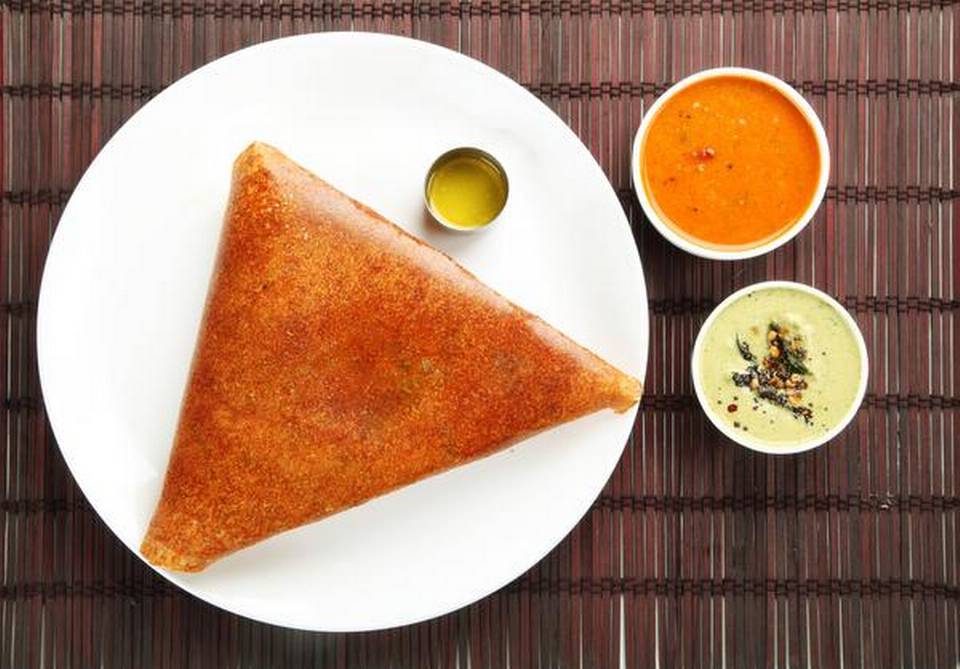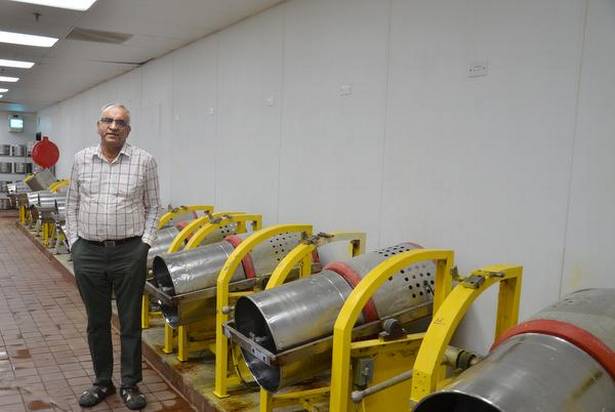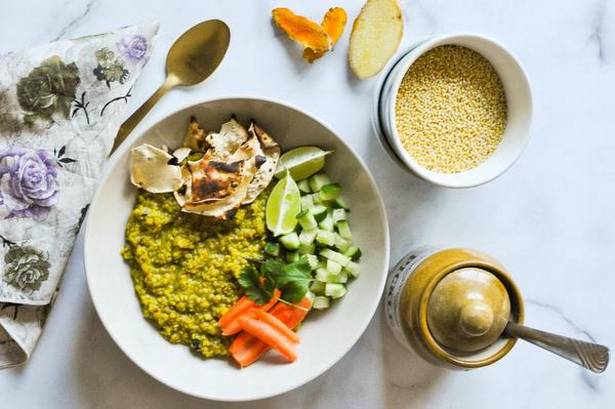
Every day, fresh batter for spongy idlis and crisp dosas makes its way across the West Coast of the US to homesick Indians, and Americans enamoured by this gluten-free, vegan treat. A man from Thirunelveli is behind it all
In a quiet neighbourhood in San Jose, California, a young Mexican boy opens rice and dal bags. He apportions them onto 150 containers using an automatic weighing and dispensing machine; then soaks them in water. Another operator, cleans the rice and lentils, and loads them onto the 34 custom made stone wet grinders. The machines start whirring and another Mexican employee, wearing a head net and apron, hovers over them with a super-size spatula, constantly checking on batter thickness.
“There are 25 employees who work here, and they can pronounce the names of Indian food and ingredients more articulately than I can,” smiles Mani Krishnan, founder and president of Shastha Foods, which makes 12,500 kilos of fresh idli and dosa batter every week. With this batter, approximately 100 million dosas have been served across the US, over the last 16 years. “Let’s simplify that further,” he adds. “Every minute, four containers of Shastha idli or dosa batter are being sold across the US”.
Hailing from Kadayam village, Thirunelveli, Mani recounts that when he decided to start this business in 2003, it was neither new nor unheard of in America. “There were already players in the market. I think the system that I created, helped me maintain quality, ensure consistency in delivery and also scale up. I am proud to say that it is Indian technology at work in the US.”
Prior to becoming a foodpreneur, Mani managed a profitable business selling Intel processors, mother boards and hard disk drives to Indian organizations for 18 years. “I had 25 offices in India. However, that business went South and I came to a point where I had to re-build my life from scratch. I was in my 40s by then.”
The genesis
Using his experience in Indian import, Mani decided to bring filter coffee powder to America. “We stumbled upon the idea to sell idli batter in 2003; we did not do a formal market study but we made an observation; it was the phase when there was a steady rise in Indian nuclear families in the US and people had no time to buy the rice, soak it, grind it and allow it to ferment”. In the beginning, Mani would grind the batter using Ultra1.5 litre grinder and deliver the containers to Indian stores in San Jose. Today, his batter is in 300 stores across the West Coast of the US.
“I envision batter to be distributed the same way we get our milk everyday,” he says. The first batch was delivered in his car. As the company grew, they acquired a refrigerated cargo van. “Soon, we out-grew that and we invested in small refrigerated trucks. We now use three small 14ft refrigerated trucks and a cargo van because we need to drive through city roads and smaller neighbourhoods; we need to be able to park!” he quips, adding that delivery happens seven days a week.

The first five years, Mani faced challenges which were beyond his kitchen. “There were restrictions on the import of two main ingredients required to make the batter: rice and dal. At one point, I was buying rice from Africa, Dubai and USA. Once you are in production, you need to supply; stopping is not an option,” says the 66-year-old, who holds a Masters in Accounting from the University of Bombay.
The heart of Shastha’s operations is a 7,000 square foot spotless kitchen with several stone grinders in stainless steel drums, which have been customized to work in rhythm. Mani and his friends brainstormed to create a process flow for the plant to minimize overall movement. “I learned that one cannot come up with 100 percent accurate design in the initial stage itself. As the business grew, we had to make minor modifications to meet the new challenges. The 100 percent organic products launch in 2017, is a good example. This was not envisaged in the early stages but when this new line of products was approved, I had to make some minor modifications without disrupting the production of the other 13 varieties of batter, and still launch the organic line.”

Rise of the millets
Though it sounds uncomplicated, most people still find it a challenge to make idli batter, which will result in softest idlis, every single time. “Processes can be automated; the quality and consistency can be maintained only by human intervention. We process small batches. Our batter is a combination of rice, urad dal and salt. We don’t add any other ingredients.”
_________________________
- “There are no artificial ingredients in Shastha batter variants to make it last forever,” explains Soma Sengupta, a California-based food blogger (My Friday Food Swings). A working mother and food blogger, she created two recipes using the Shastha batter which was showcased at the Incredible India booth at the Travel Adventure Show in Santa Clara in 2019. “I created a multi millets adai with their readymade batter and the ayurvedic millets khitchari. My inspiration was of course the super grain millets.” At her home kitchen Soma tweaks traditional recipes with a little fusion for her daughter. “With the Shastha dosabatter I often make a dosa quesadilla with cheese, peppers and some pasta sauce. I also make pizza uttapams and idli pops served with guacamole.”
- Since dosas are vegetarian, vegan and gluten-free, a large non-Indian population is also trying the ‘steamed rice cakes’. One such customer is Brad Osterhout, from Roseville, California who has been using the batter for almost one year. “I was trying different foods with friends at work and loved the taste and protein available in the batter,” he says, adding “Quinoa was the first batter I tried and I really enjoyed the taste. I paired it with vegetables and a mango chutney. I learned to make dosas from YouTube videos.”
__________________________
Along with his wife Anandhi, Mani experiments with most of the batter at home, sharing it with colleagues and friends for feedback, before going large scale.
“Hands down, our idli and dosa batter are still the most popular and fast selling product line. However, batters like the brown rice dosa, oats dosa, quinoa idli, millet dosa, adai, pesarattu are also doing well,” reveals Mani. He has been given the nod of approval for his vegetable idli batter from his close circle of friends, and it will soon be available in the market. “My future plan is to grow the non-idli dosa batter business; which is primarily millets.”
A believer in old school word-of-mouth advertising, Mani actively supports Indian events at the Bay area. His idlis are served at gatherings conducted by the Tamil Mandram, at the Spring Festival, Concord Murugan Temple and Livermore Temple. “The goodwill has carried us through. The community and Indian grocery stores have supported our journey, so we believe in giving back in our own way.”
With a gleeful smile, Mani says he is keen on introducing a robot, which will pack 25 containers of batter within a minute. “Robotics will increase productivity and efficiency. I don’t have to constantly ask my team to spend less time on their phones!” jokes Mani. Just then a notification from Doordash and Grubhub appear on his phone, to collect a container of pesarattu batter and idli batter. In the other room, his administrative staff are managing the online orders. Meanwhile a team is creating an icebox to package batter for deliveries in other parts of the US. Looks like there is much more grinding to do.
source: http://www.thehindu.com / The Hindu / Home> Life & Style> Food / by Jayanthi Somasundaram / August 27th, 2019